Tarsier, Bohol Island Sanctuary, The Philippines: photo by Bonnie
Stewart, 2015: image via Aar Kay @pictureoftheday, 8 July 2015
I am a tarsier and a tarsier’s son,
the grandson and great-grandson of tarsiers,
a tiny creature, made up of two pupils
and whatever simply could not be left out;
miraculously saved from further alterations --
since I’m no one’s idea of a treat,
my coat’s too small for a fur collar,
my glands provide no bliss,
and concerts go on without my gut --
I, a tarsier,
sit living on a human fingertip.
the grandson and great-grandson of tarsiers,
a tiny creature, made up of two pupils
and whatever simply could not be left out;
miraculously saved from further alterations --
since I’m no one’s idea of a treat,
my coat’s too small for a fur collar,
my glands provide no bliss,
and concerts go on without my gut --
I, a tarsier,
sit living on a human fingertip.
Good morning, lord and master,
what will you give me
for not taking anything from me?
How will you reward me for your own magnanimity?
What price will you set on my priceless head
for the poses I strike to make you smile?
what will you give me
for not taking anything from me?
How will you reward me for your own magnanimity?
What price will you set on my priceless head
for the poses I strike to make you smile?
My good lord is gracious,
my good lord is kind.
Who else could bear such witness if there were
no creatures unworthy of death?
You yourselves, perhaps?
But what you’ve come to know about yourselves
will serve for a sleepless night from star to star.
my good lord is kind.
Who else could bear such witness if there were
no creatures unworthy of death?
You yourselves, perhaps?
But what you’ve come to know about yourselves
will serve for a sleepless night from star to star.
And only we few who remain unstripped of fur,
untorn from bone, unplucked of soaring feathers,
esteemed in all our quills, scales, tusks, and horns,
and in whatever else that ingenious protein
has seen fit to clothe us with,
we, my lord, are your dream,
which finds you innocent for now.
untorn from bone, unplucked of soaring feathers,
esteemed in all our quills, scales, tusks, and horns,
and in whatever else that ingenious protein
has seen fit to clothe us with,
we, my lord, are your dream,
which finds you innocent for now.
I am a tarsier -- the father and grandfather of tarsiers
a tiny creature, nearly half of something,
yet nonetheless a whole no less than others,
so light that twigs spring up beneath my weight
and might have lifted me to heaven long ago
if I hadn’t had to fall
time and again
like a stone lifted from hearts
grown oh so sentimental:
I, a tarsier,
know well how essential it is to be a tarsier.
a tiny creature, nearly half of something,
yet nonetheless a whole no less than others,
so light that twigs spring up beneath my weight
and might have lifted me to heaven long ago
if I hadn’t had to fall
time and again
like a stone lifted from hearts
grown oh so sentimental:
I, a tarsier,
know well how essential it is to be a tarsier.
Wilawa Szmborska (1923-2012: Tarsier, from No End of Fun (1967), translated by Stanislaw Baranczak and Clare Cavanagh
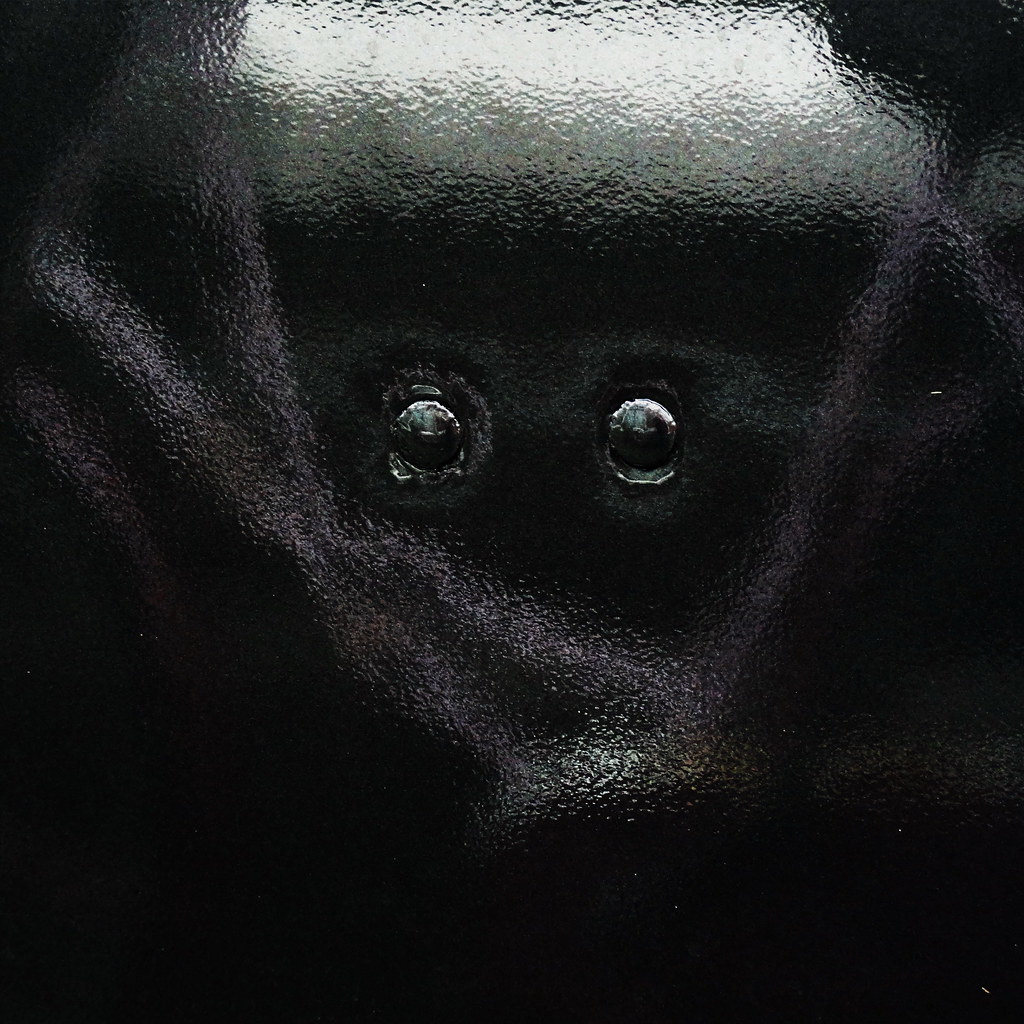
Tarsius bancanus [Cephalopachus bancanus] -- Tarsier [Western Tarsier]: photo by Rookuzz, 15 May 2011
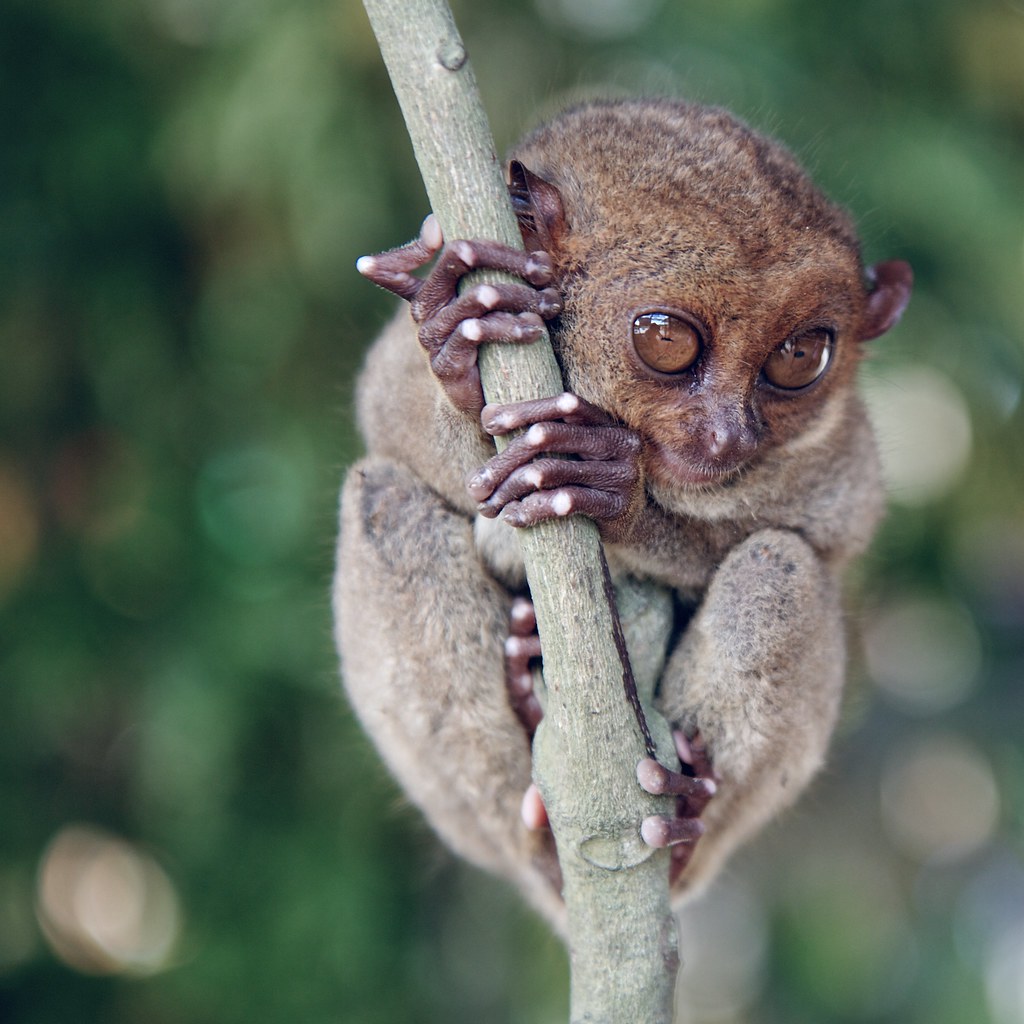
Tarsier. In the sanctuary near the town of Corella, on the Philippine Island of Bohol: photo by Peter Hellberg, 15 February 2011

Tarsier, Bohol Island Sanctuary, Corella, The Philippines: photo by yeowatzup, 4 November 2007
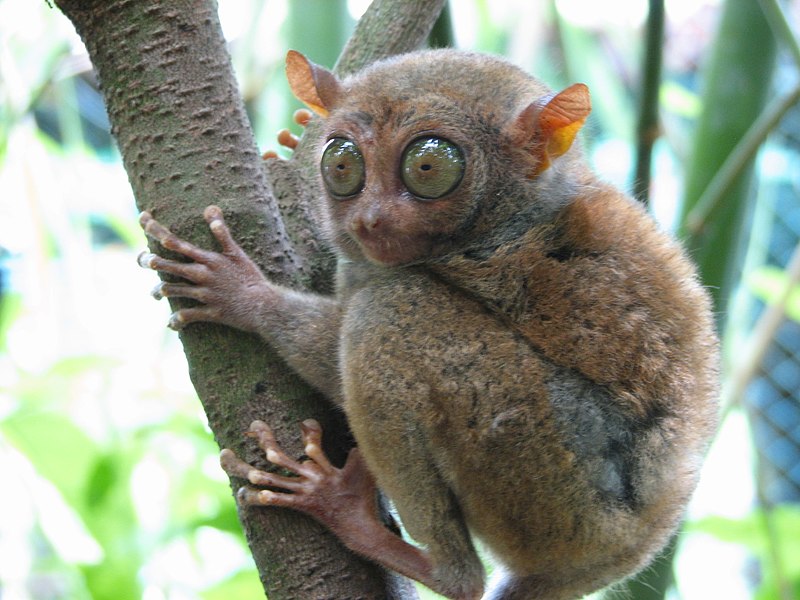
Philippine Tarsier (Carlito syrichta), one of the smallest primates. This one is about 5 inches long with a tail longer than its body. Photo taken in Bohol, Philippines: photo by mtoz, 20 June 2007
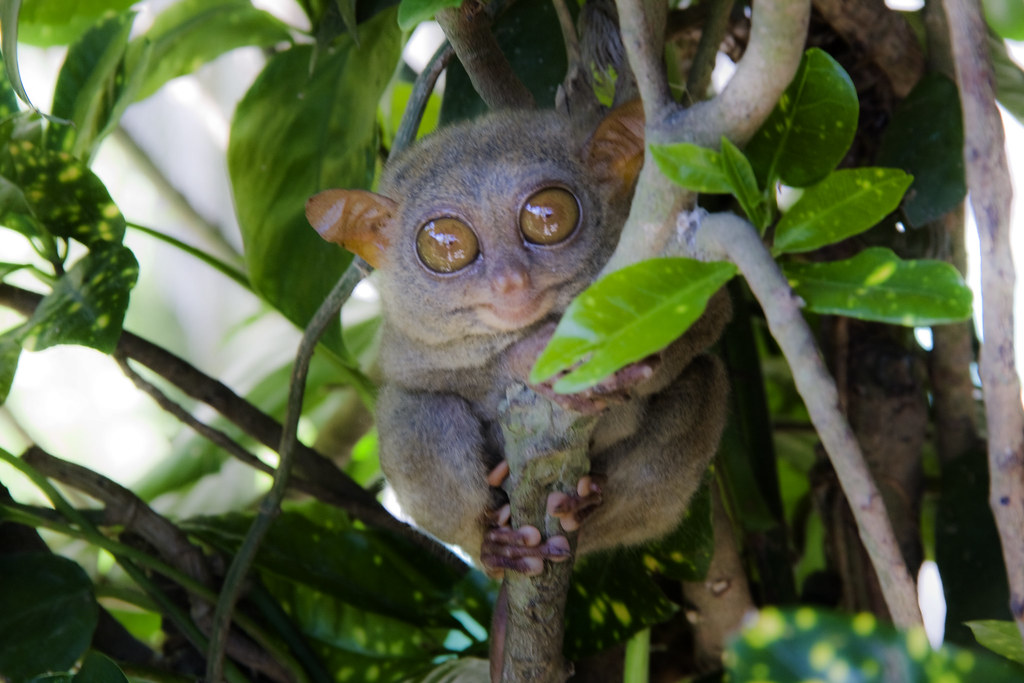
Tarsier. Bohol, The Philippines: photo by JT's Hazy Reality, 22 February 2015

Philippine Tarsier: photo by Steve Olmstead, 14 November 2008
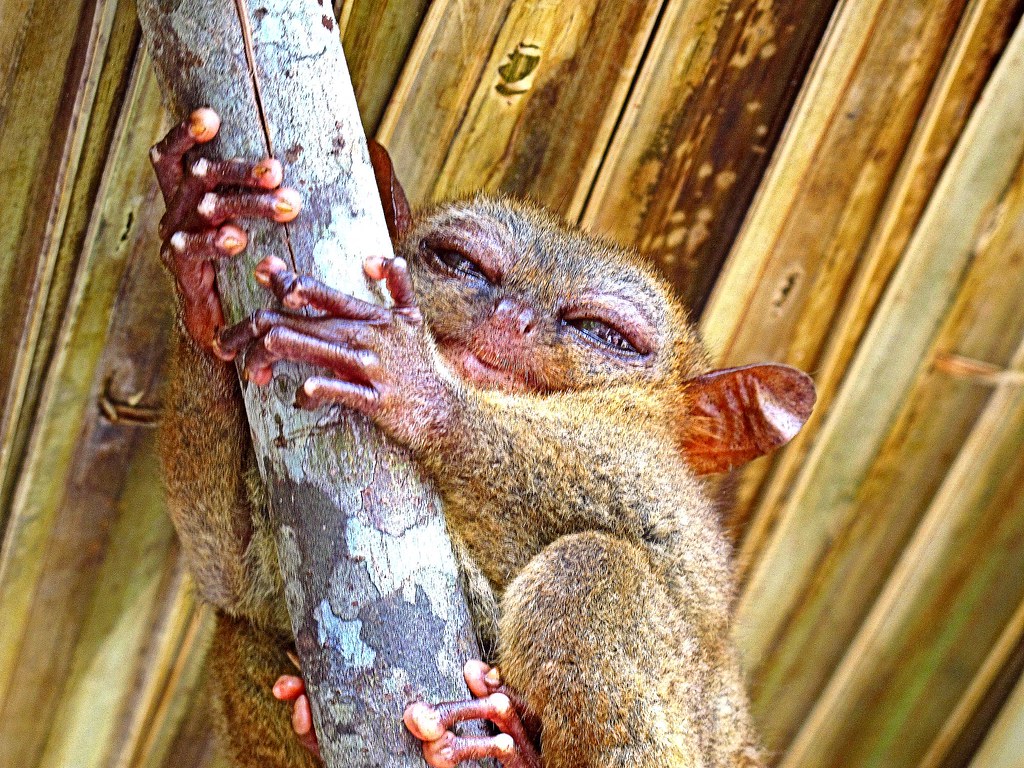
Tarsier, Bohol, The Philippines: photo by Edward Musiak, 2 September 2011
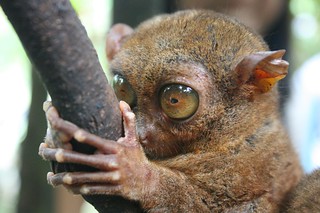
Tarsier, Bohol, The Philippines: photo by jaya, 22 December 2007

Carlito syrichta (Philippine Tarsier): photo by Jasper Greek Golangco, 2006
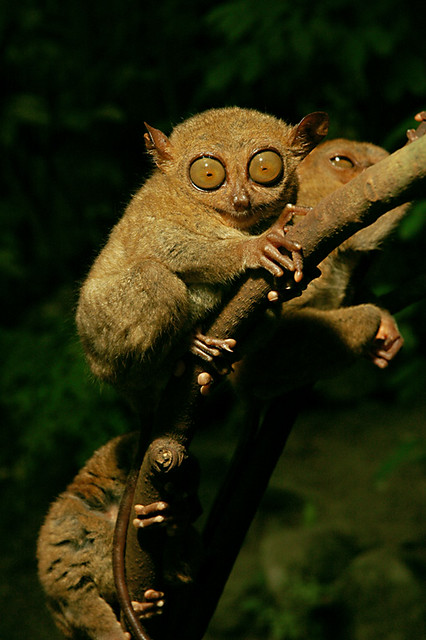
Crowding the branch. Tarsiers, Bohol, The Philippines: photo by igorms, 9 April 2006
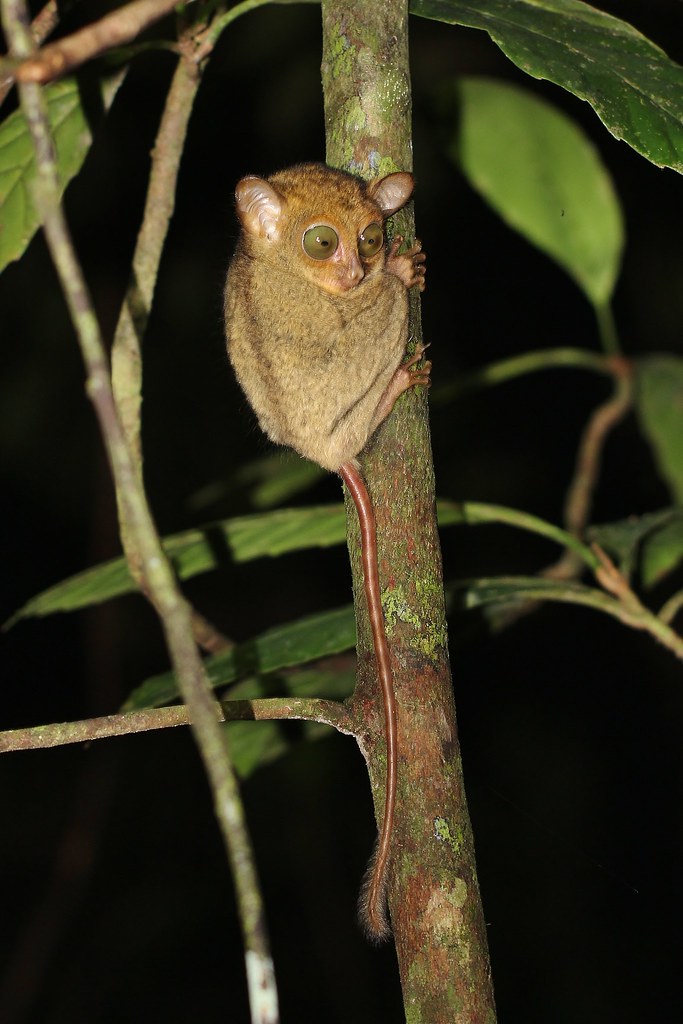
Western Tarsier (Cephalopachus bancanus borneanus), Kinabatangan River, Borneo: photo by Steve O'Shea, 29 July 2013
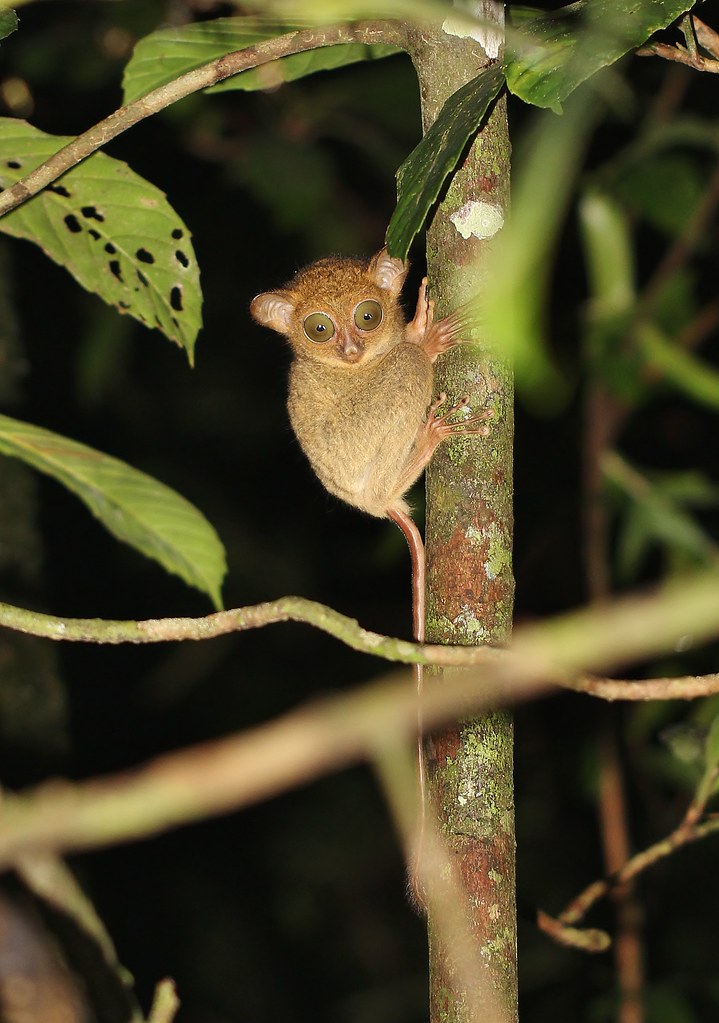
Western Tarsier (Cephalopachus bancanus borneanus), Kinabatangan River, Borneo: photo by Steve O'Shea, 29 July 2013
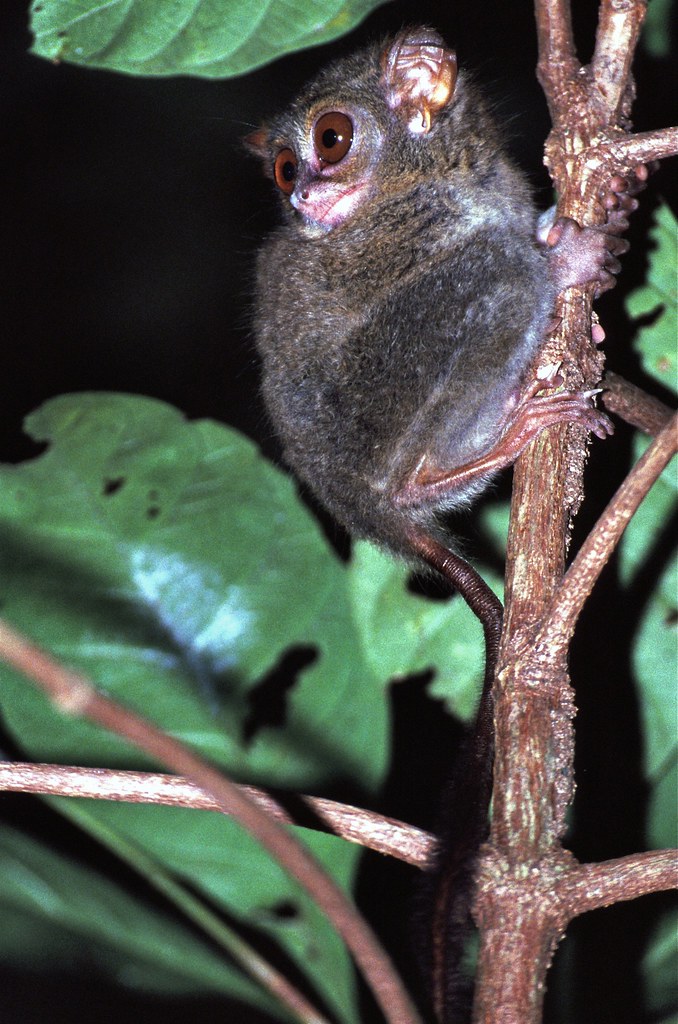
Spectral Tarsier (Tarsius tarsier), Nangkoko NP. Sulawesi, Indonesia: photo by Bernard Dupont, April 2003
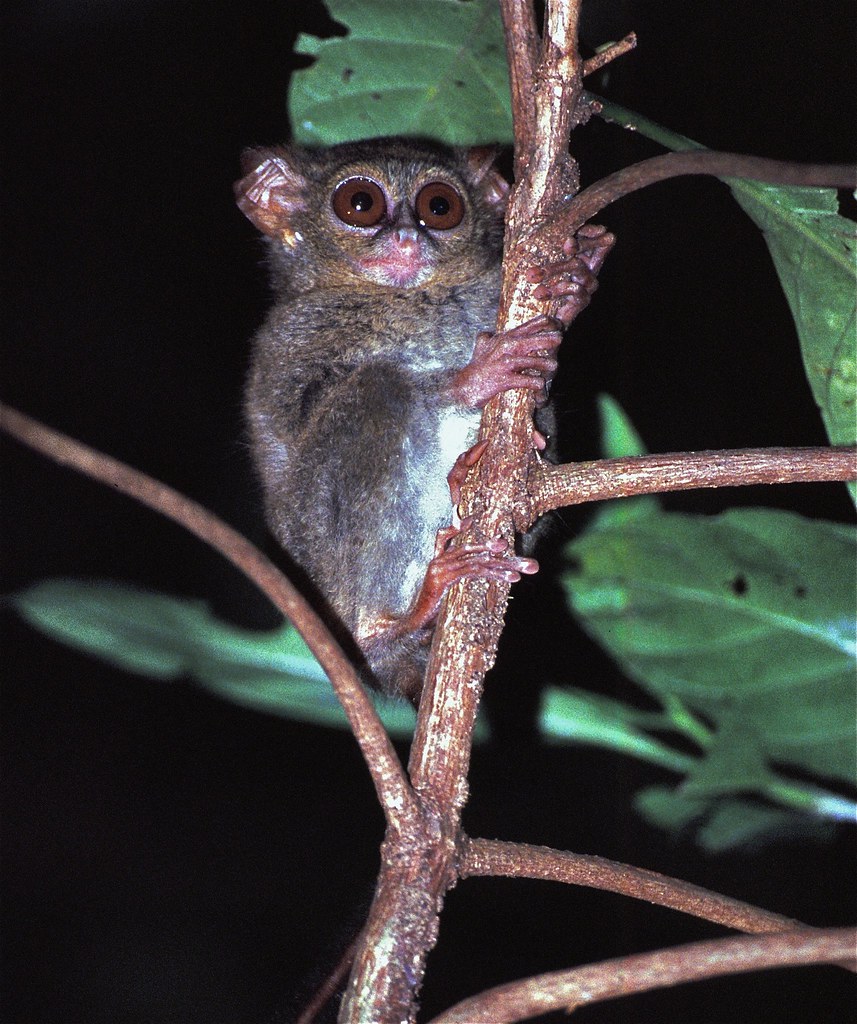
Spectral Tarsier (Tarsius tarsier), Nangkoko NP. Sulawesi, Indonesia: photo by Bernard Dupont, April 2003
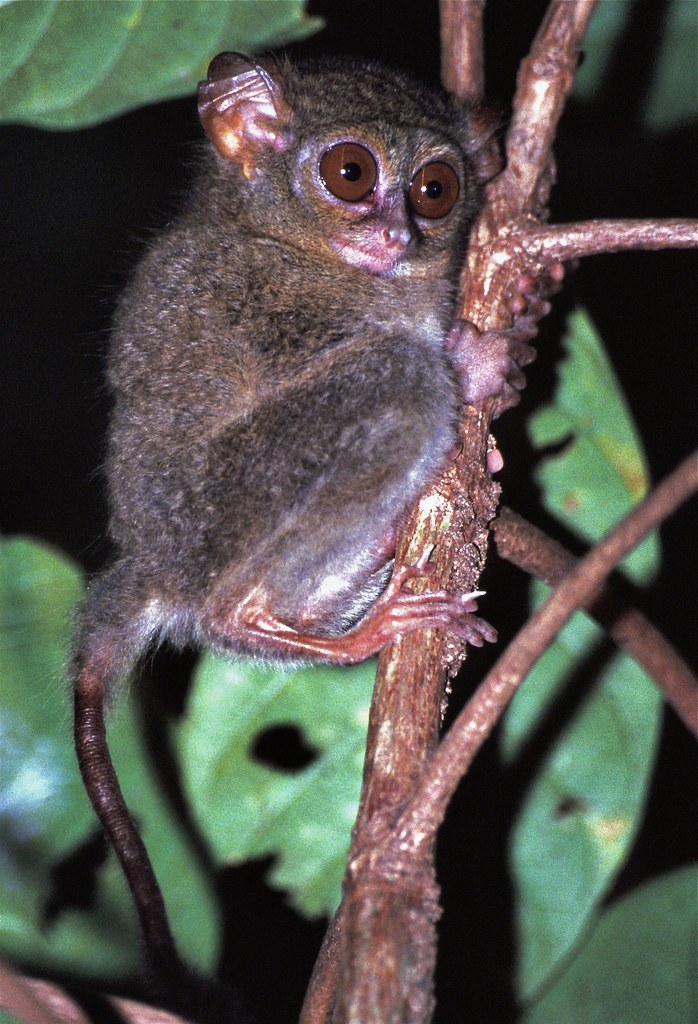
Spectral Tarsier (Tarsius tarsier), Nangkoko NP. Sulawesi, Indonesia: photo by Bernard Dupont, April 2003
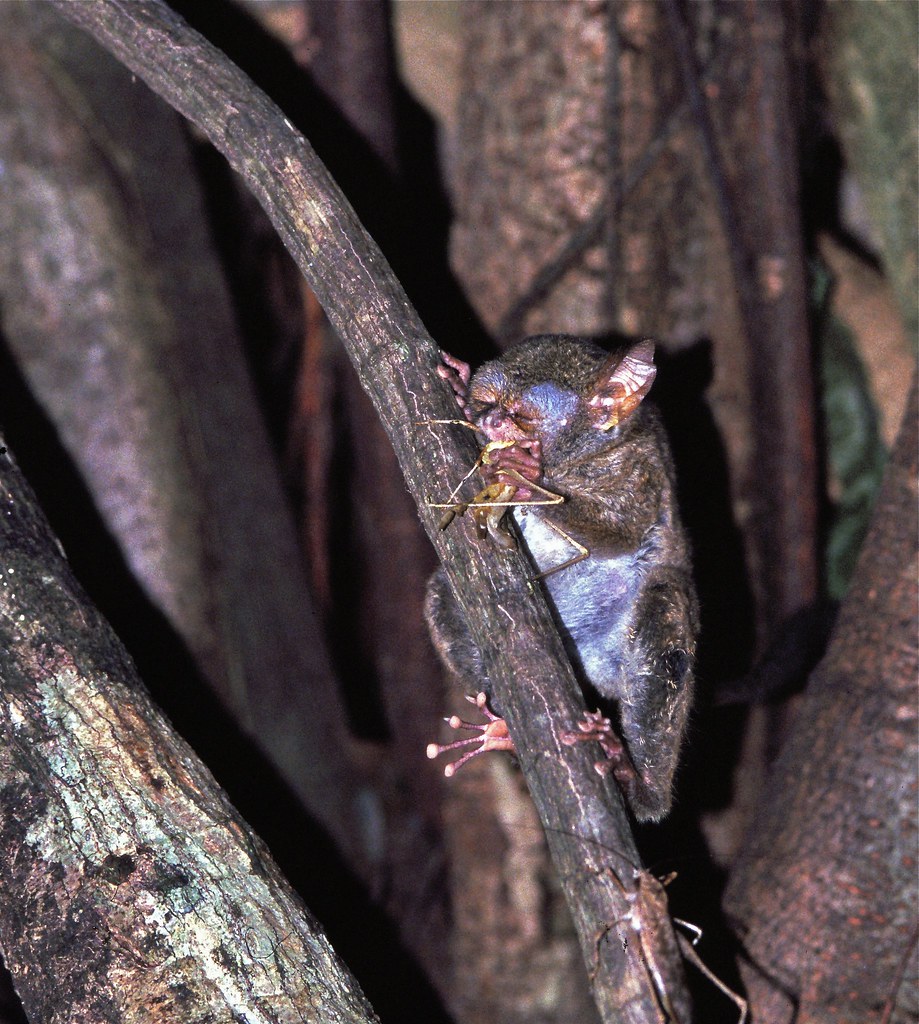
Spectral Tarsier (Tarsius tarsier), Nangkoko NP. Sulawesi, Indonesia: photo by Bernard Dupont, April 2003
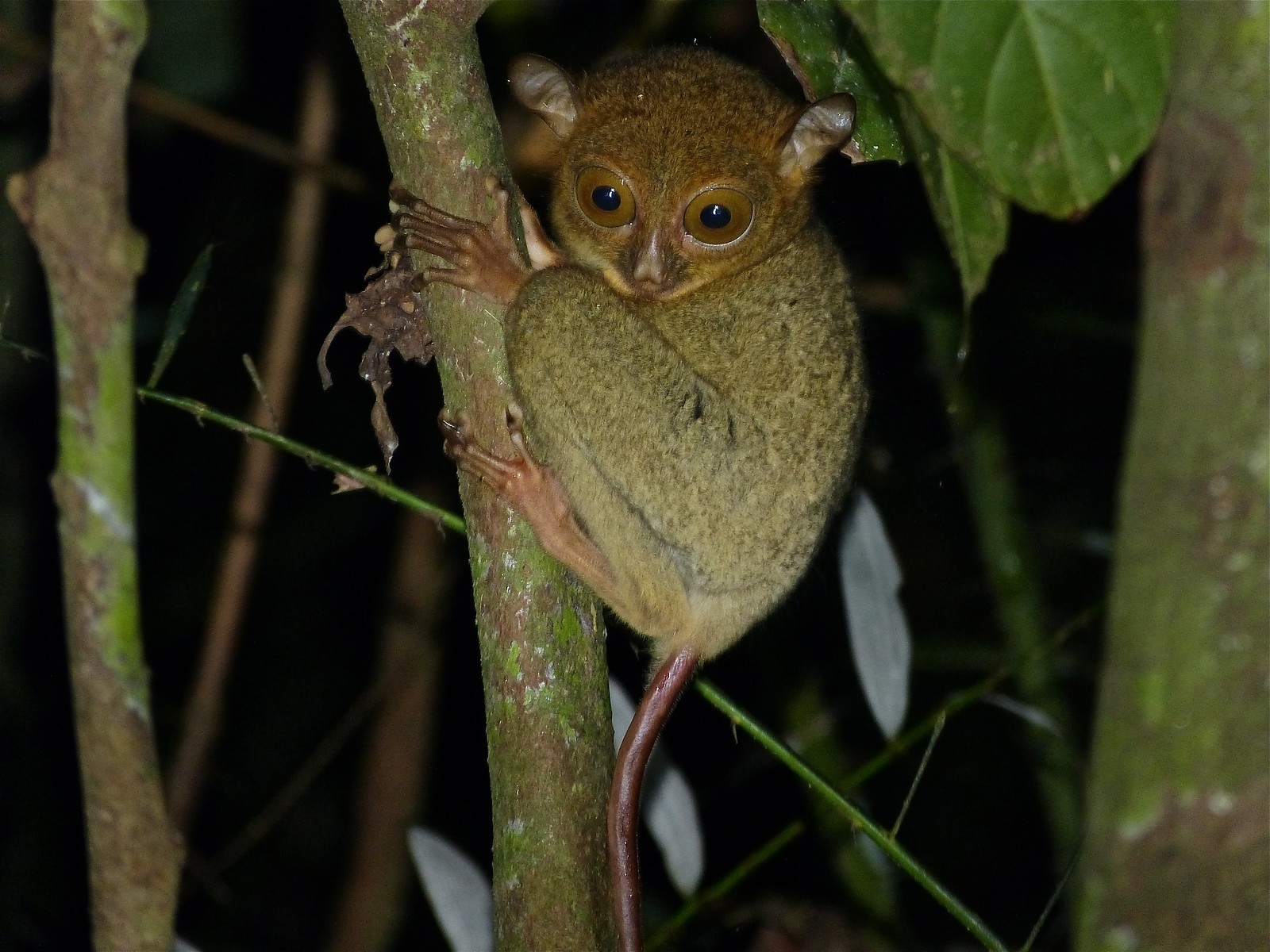
Bornean Tarsier (Cephalopachus bancanus borneanus), Bilit, Sabah, Malaysia: photo by Bernard Dupont, 19 September 2012
Tarsier, Bohol Island Sanctuary, The Philippines; Hello again, little one!: image via The Tummy Traveler @tummytraveler, 27 July 2015
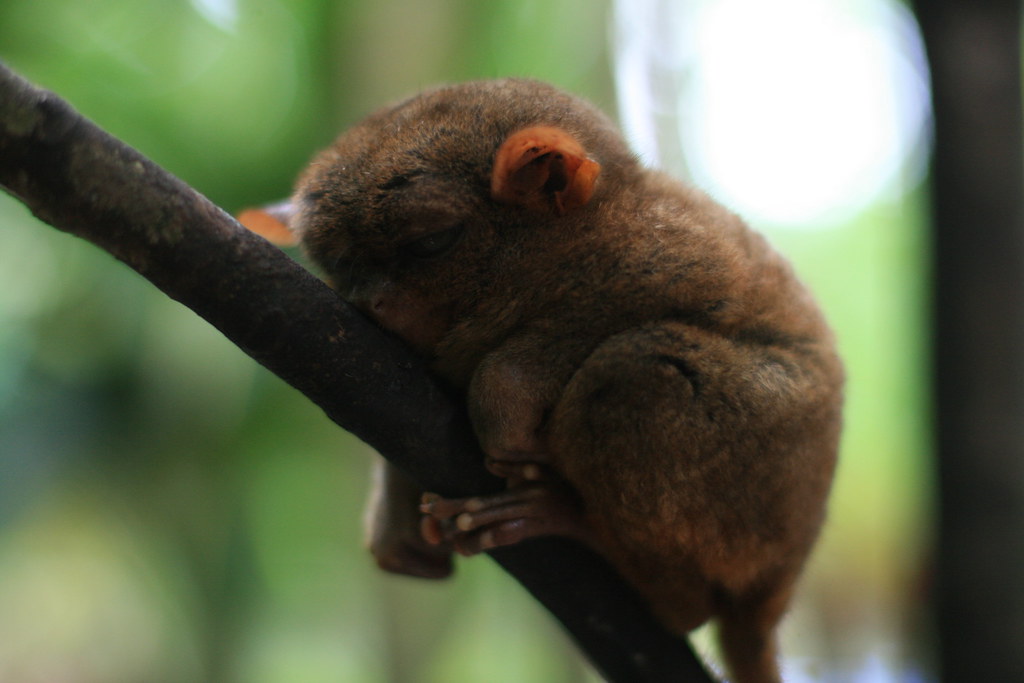
Tarsier. Bohol, The Philippines: photo by baltamour carla, 26 December 2008
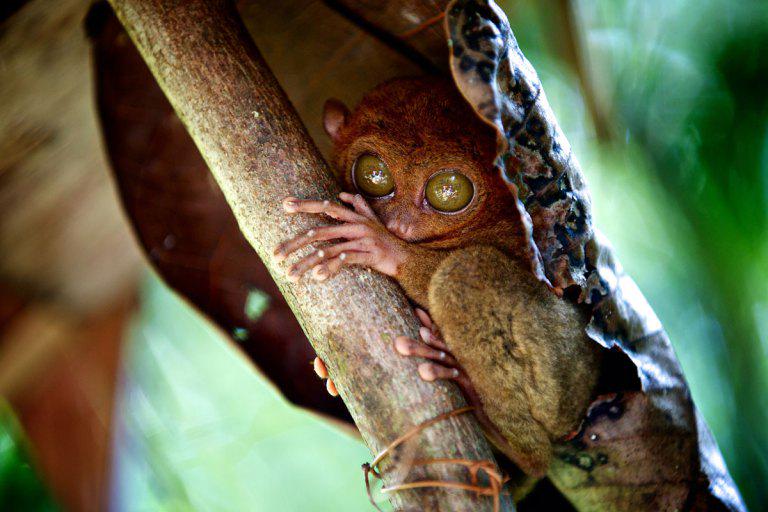
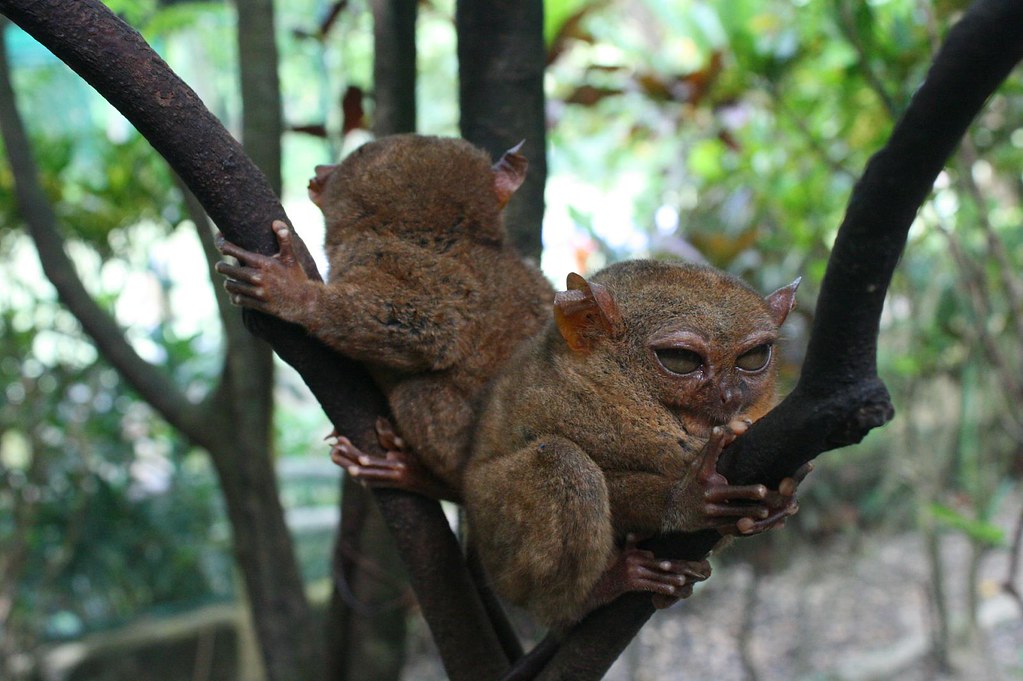
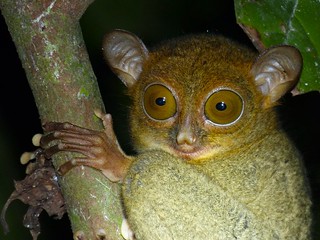

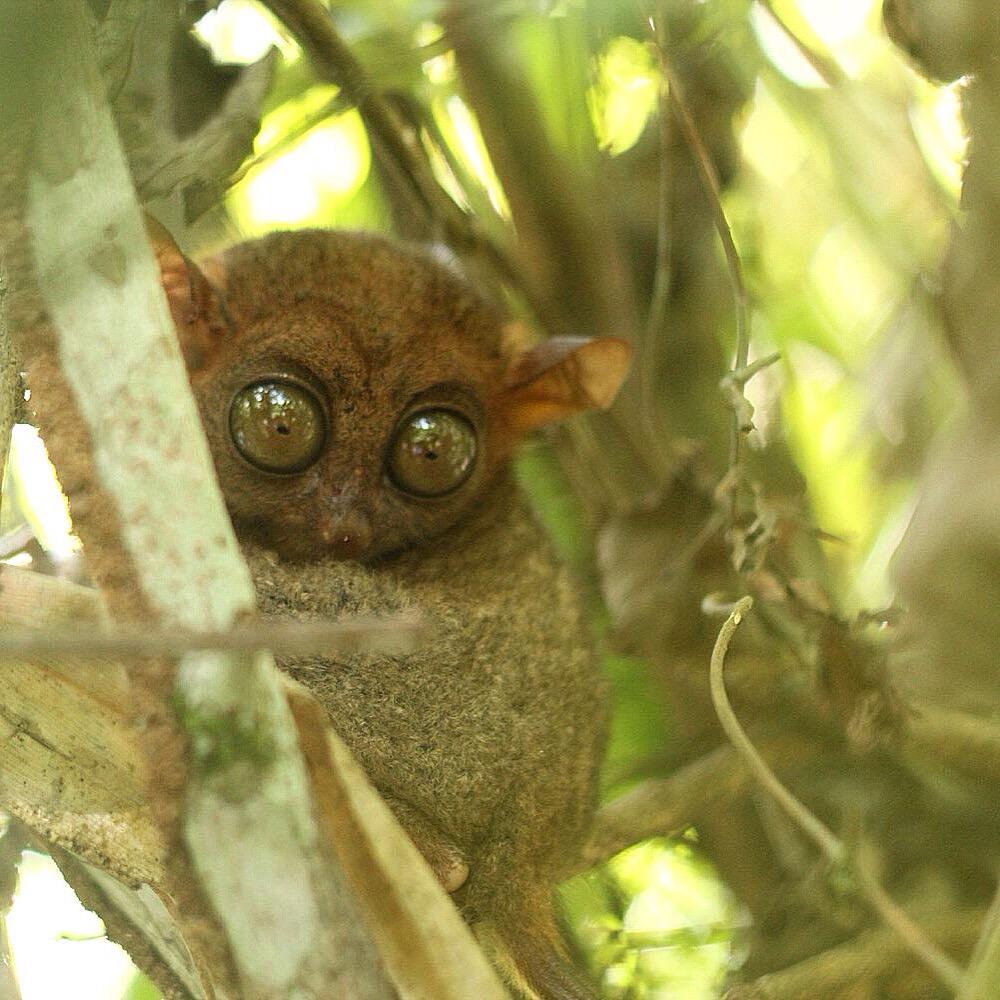



7 comments:
I, a tarsier, sit living on a human fingertip...
Not very much is known about these wee creatures of the ancient night, even a half century after Wislawa Szymborska -- writing from so very far away and with not of lot of information to go on -- composed this marvelous poem about them. And not much more is ever likely to be known, for none of the several Tarsier species is expected to be around much longer, as every day more of their forest habitat disappears, all across Southeast Asia..
The ability of the Tarsier to sit upon a human fingertip, which the poet notes, is as real as its ability to cling to practically anything -- but with sitting upon fingertips, it's strictly an ability, occasionally born of imposed necessity, and nothing like a natural propensity. In fact Tarsiers can't take much of human company, wisely avoid it when possible, and when captured and sold as pets, quickly die of stress (not to mention the lack of live insects to consume, their natural and indeed exclusive diet).
Tarsier Primate: The Little Alien
This 45 minute New Zealand-made documentary on the smallest of the primates, the tiny, secretive, large-eyed forest sprite that fell (or leapt) to Earth sometime in the Eocene, c. 45 years ago, is a wonder, particularly if you're interested in trying to imagine what things might have been like on this once lovely blue-and-green planet had not the lumbering, blundering, brain-heavy and thus eventually dominant bipedal primate (homo sapiens modernus) happened along, bent on industriously plundering, extracting, desertifying, abstractifying, taming, buying and selling everything.
As with many late discoveries concerning the elusive, incredibly diverse forest life of this part of the world, contemporary human awareness of these small creatures can't but be more than a little elegiac, for those home forests are falling fast and will very soon be gone; and with that tragic departure will come the evanishment of a web of life more intricate and various than anybody will ever have really known.
The video focuses on the work of two natives of the Philippines, Carlito Pizarras (who learned about Tarsiers and their environment on night expeditions with his father, who had hunted them for the pet trade), and Irene Arboleda, a young academic researcher, to help save the endangered Philippine Tarsier -- just one one of numerous Tarsius species (nobody's quite sure to this day just how many species there are), but now certainly the best known, thanks largely to their devotion, research and dedicated labour and the establishment of the sanctuary on Bohol, where many of the photos here were made.
The Philippine Tarsier, Tarsius Syrichta -- a player of the pipes of Pan -- breeds just once a year, in the dark of night, after the November full moon, and produces just one offspring, which may or may not survive to maturity.
(About the doc I've linked to above, there are four brief commercial breaks, each of which can be clicked away after a few seconds, otherwise the full film is here intact.)
Amazing!
Nin,
Wislawa and the Tarsiers thank you very much.
And by the by, I note that the earnest cottage primatologist, who was here just a moment ago, has spoken of "...the tiny, secretive, large-eyed forest sprite that fell (or leapt) to Earth sometime in the Eocene, c. 45 years ago..."
Hmm. That would put the Eocene as happening, well, only yesterday, as it were.
Perhaps the earnest c.p. meant to say not "45" but "45 million".
AH, Tom, 45 or 45 million, what is time, but "evanishment," a truly lovely word, somehow echoing "ravishment," and "eventually?" These wee creatures are truly sprites, their great eyelids closing Yoda-like over those all-seeing orbs, those spindly fingers with embedded nails something you'd see in a old peoples' home, and these old people tarsiers seem so wide awake (when not sleeping) and in a state of natural astonishment (and "the better to see you with, my dear...").
Thanks for this... May they thrive!
Abdal-Hayy,
Hearing your kind words, the Tarsiers have now awakened in their forever young yet hopelessly doomed though they don't know it arboreal old people's home, opened their huge Yoda eyes (which can only look in one direction, straight ahead, for, small freaks of natural selection that they are, they have no peripheral vision, these tiny packages of evolutionary genius must rotate their heads in order to look to the side -- which fortunately is quite easy for them to do, as 45 million years is a pretty long time, plenty of time to try out all kinds of useful mutations, and one particular little trick has proved especially useful, they can swivel their heads 180 degrees in both directions, a veritable wonder among primates -- a lot of the other old people here who aren't Tarsiers, well make that some, can't even turn their heads at all any more, have wrinkled shrunken old eyes, can't see very well anyway, and certainly, being entirely compounded of broken sticks, lack the gigantic tarsus bone, another wonder, which allows the Tarsier to spring-leap one hundred times its body length in a not New York millisecond), and -- though they are generally solitary, so rarely have a chance to agree on much of anything -- agreed that you are, simply, on the evidence of your kind words, they aren't deaf, just the opposite, their #1 favourite large bipedal primate.
They're very open minded in their forever young old age, and if it were their world instead of ours, one can't help feeling they would be very fair and considerate toward everyone... except possibly large, delicious crickets.
But nobody's perfect, even Tarsiers and especially not us -- though the Tarsiers have just gently vocalized a reminder that I ought to speak for myself, on that point.
Exquisite--both the poem and the little creature of the night.
One feels certain that the ghost of the poet would be highly honoured by the P2P respect from another esteemed fellow denizen of the word forest; and too that the little creature, with a mind of its own, in a world of its own, finds all these words almost as satisfying as a large, fat cricket.
Post a Comment